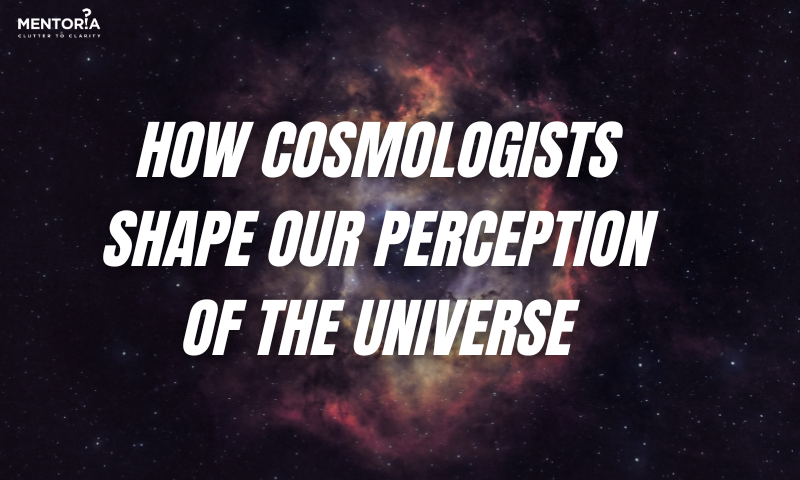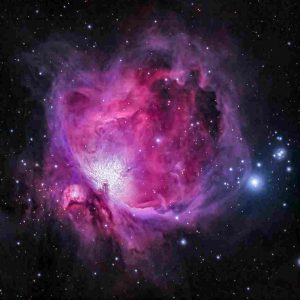How Cosmologists Shape Our Perception Of The Universe

Cosmologists are like the explorers of the universe. They study the stars, galaxies, and everything beyond to understand the vastness of space. Imagine them as cosmic detectives, trying to solve the mysteries of the universe. They use powerful telescopes, mathematics, and a lot of curiosity to map out the universe and figure out how it all began and where it’s going. It’s like putting together a giant cosmic puzzle, and cosmologists are the ones with the pieces. So, let’s dive into their world and see how they help us understand the grandeur of the cosmos.
The Cosmic Puzzle: Why Map The Universe?
Mapping the universe, in the context of cosmology, refers to the process of creating detailed charts or visual representations of the distribution and properties of celestial objects like galaxies, stars, and cosmic phenomena across the vast expanse of space. It’s a bit like creating a cosmic atlas.
For example, cosmologists use powerful telescopes to observe and record the positions, brightness, and motion of galaxies. They analyse these observations to create 3D maps that show where galaxies are located in relation to each other on the cosmic scale. These maps provide a comprehensive view of the large-scale structure of the universe, revealing patterns and structures that help us understand its underlying geometry and evolution.
Before we dive into cosmic cartography, let’s address the big question: why do we need to map the universe? Well, it turns out that understanding the universe’s structure and composition is fundamental to our quest for knowledge. Here are a few compelling reasons:
- Unlocking the Universe’s History: By mapping the universe, cosmologists can trace its evolution, from the Big Bang to the present day. It’s like reading a cosmic history book written in the stars.
- Dark Matter and Dark Energy: These enigmatic cosmic ingredients make up a whopping 95% of the universe. Mapping helps us detect their presence and understand their role in shaping the cosmos.
- Galaxies and Clusters: Cosmologists map the distribution of galaxies and galaxy clusters, shedding light on their formation and interactions. It’s like connecting the cosmic dots.
- Cosmic Microwave Background: This ancient light is a snapshot of the universe’s early days. Mapping it provides insights into the universe’s infancy.
Tools Of The Trade: Telescopes, Satellites, And Supercomputers
Now that we understand why mapping the universe is crucial, let’s explore the tools cosmologists use to accomplish this monumental task.
- Telescopes: Telescopes are cosmologists’ trusty companions. They collect and amplify light from distant celestial objects, allowing us to observe galaxies, stars, and planets. Modern telescopes, like the Hubble Space Telescope, have revolutionised our understanding of the universe.
- Satellites: Cosmologists often turn to space-based observatories to avoid interference from Earth’s atmosphere. Satellites like the Planck satellite have provided valuable data for mapping cosmic microwave background radiation.
- Supercomputers: Processing the immense amount of data collected from telescopes and satellites requires powerful supercomputers. Cosmologists use these machines to create complex simulations of the universe’s evolution.
Cosmic Cartography: How It Works
Cosmic cartography is the process of creating maps of the universe. It is a branch of astronomy that uses data from telescopes and other astronomical instruments to create three-dimensional maps of the cosmos, showing the distribution of galaxies, clusters, and other cosmic objects. Now, let’s get into the nitty-gritty of how cosmologists actually map the universe. It’s not just about taking pretty pictures of stars and galaxies; it’s a sophisticated process.
- Galaxy Surveys: Cosmologists conduct galaxy surveys to map the distribution of galaxies in the universe. They use telescopes to observe galaxies at different distances, creating a 3D map.
- Cosmic Microwave Background (CMB) Mapping: The CMB is the afterglow of the Big Bang. Cosmologists analyse its temperature variations to create maps that reveal the universe’s early conditions.
- Redshift Measurements: By measuring the redshift of galaxies, cosmologists can determine their velocity and distance from Earth. This information is essential for constructing a cosmic map.
- Computer Simulations: Supercomputers come into play here. Cosmologists run simulations of the universe’s evolution based on our current understanding of physics. These simulations are then compared to actual observations to refine our models.
The Expanding Universe: Hubble’s Law
One of the most groundbreaking discoveries in cosmology was made by the legendary astronomer Edwin Hubble. He observed that galaxies were receding from us, and the farther they were, the faster they moved away. This led to the formulation of Hubble’s Law, which laid the foundation for our understanding of an expanding universe.
Hubble’s Law can be summed up in a simple equation: velocity = Hubble’s constant × distance.
In other words, the universe is not static; it’s continually expanding, like an inflating balloon. Cosmologists utilise this law to:
Measure Cosmic Distances: Hubble’s Law allows cosmologists to estimate the distances to far-flung galaxies. By observing the redshift (velocity) of light from these galaxies, they can determine how fast these galaxies are moving away from us. This redshift provides valuable information about cosmic distances, helping cosmologists create more accurate maps of the universe’s large-scale structure.
Map the Universe’s Expansion: By studying the velocities and distances of galaxies in different regions of the universe, cosmologists can create detailed maps of cosmic expansion. These maps reveal the universe’s growth patterns and the distribution of galaxies, providing insights into its overall structure and evolution.
Understand the Universe’s History: Hubble’s Law is a critical component of our understanding of the universe’s history. It supports the Big Bang theory, which suggests that the universe began as a hot, dense point and has been expanding ever since. Cosmologists use the law to trace the universe’s evolution back in time, unravelling its story from its earliest moments.
Navigating The Cosmos With Mentoria
The role of cosmologists in mapping the universe is nothing short of awe-inspiring. These dedicated scientists are the cartographers of the cosmos, charting the vast expanse of space and time, and unravelling the mysteries of our universe. Through their observations, calculations, and groundbreaking research, they have expanded our understanding of the cosmos, from the earliest moments of the Big Bang to the formation of galaxies and the evolution of dark matter and dark energy.
Mentoria, as a platform committed to nurturing the next generation of scientists and researchers, understands the importance of cosmology in shaping our understanding of the universe. Our mentorship and educational programs are tailored to guide aspiring cosmologists and astrophysicists on their academic and career journeys. We connect students and budding scientists with experienced mentors who can provide valuable insights, research opportunities, and guidance in this fascinating field.
So, whether you’re a student with a passion for cosmology or an enthusiast eager to explore the wonders of the universe, Mentoria is here to support your cosmic aspirations. Join us in the quest to uncover the secrets of the cosmos, and let’s embark on a journey to map the universe together.









